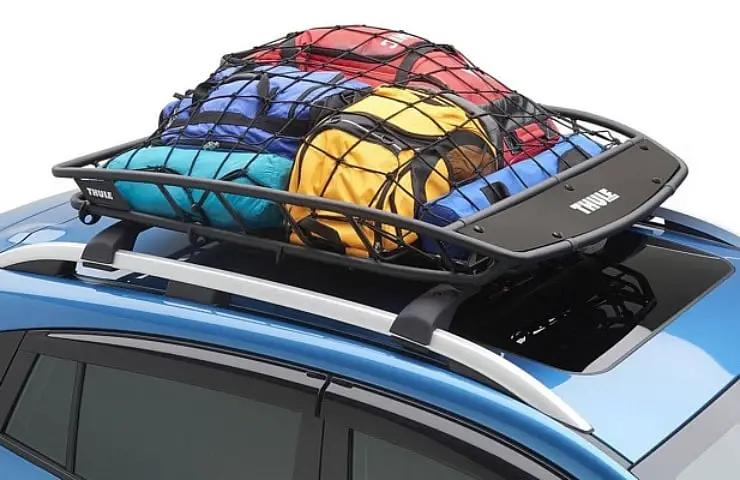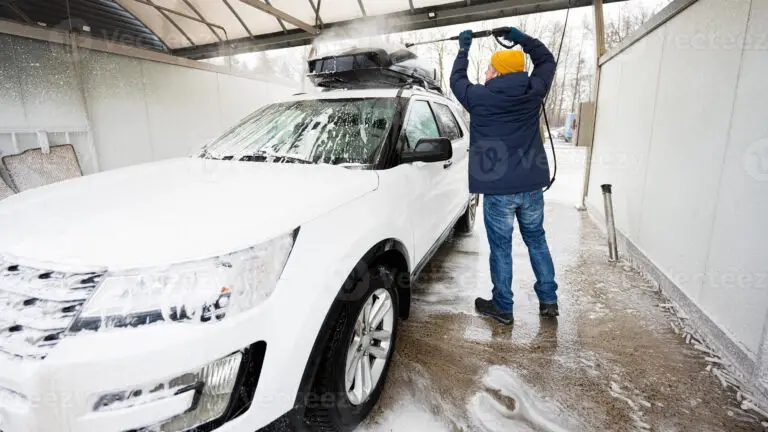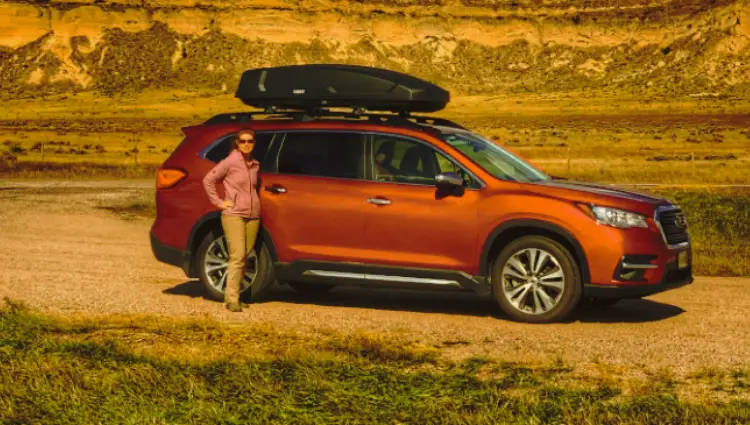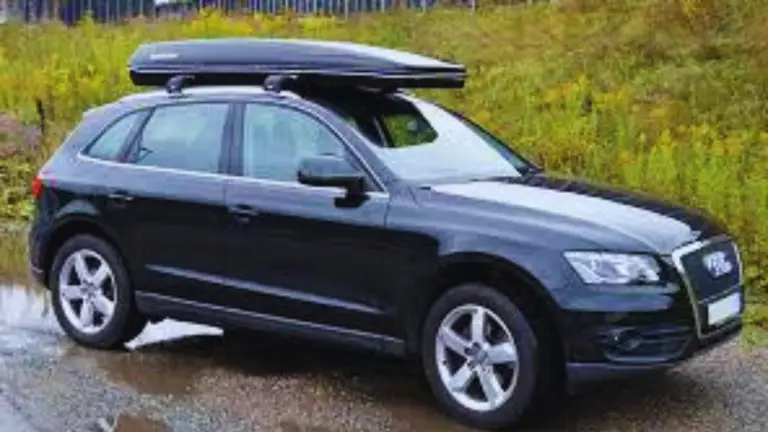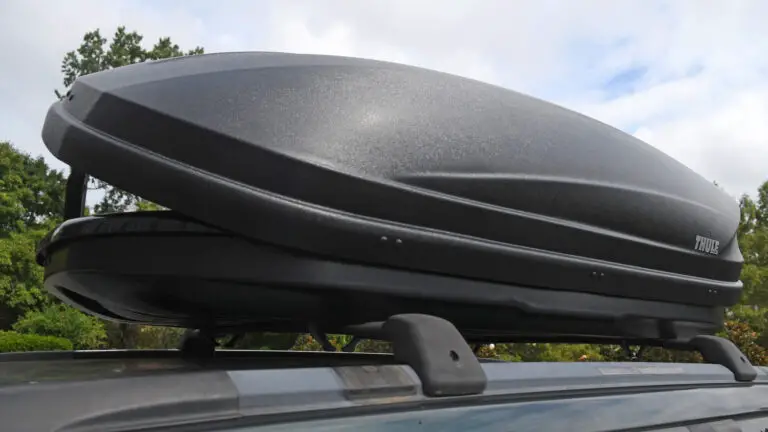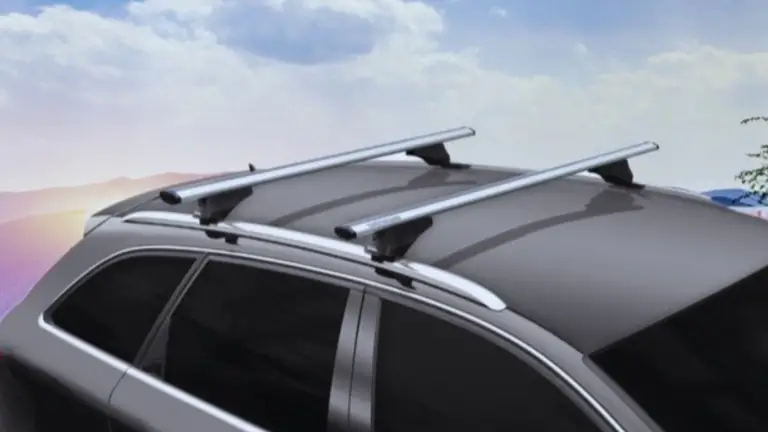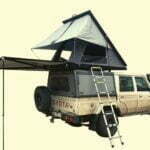In this comprehensive article, we will explore the topic of roof rails vs roof racks. Whether you’re an outdoor enthusiast, a commercial vehicle owner, or simply looking for ways to maximize your vehicle’s storage capacity, understanding the differences between roof rails and roof racks is essential. We’ll discuss their definitions, benefits, installation processes, maintenance requirements, safety considerations, and more. By the end of this article, you’ll have the knowledge to make an informed decision on whether roof rails or roof racks are better suited for your specific needs.
What Are Roof Rails?
Roof rails, also known as roof bars or roof tracks, are structural components installed on the roof of a vehicle. They run along the length of the vehicle’s roof and provide a solid foundation for attaching various accessories such as cargo carriers, roof boxes, bike racks, and kayak mounts. Roof rails are typically factory-installed or can be added as aftermarket accessories. Their primary purpose is to enhance the functionality and versatility of a vehicle by expanding its storage capacity.
What Is a Roof Rack?
A roof rack is a complete system that consists of crossbars, support feet, and mounting brackets. Unlike roof rails, which are integrated into the vehicle’s design, roof racks are typically aftermarket accessories that need to be installed on the vehicle’s roof. The crossbars provide a secure platform for carrying different types of cargo, including luggage, sports equipment, and specialized gear. Roof racks come in various shapes and sizes to accommodate different vehicle models and cargo requirements.
Differences Between Roof Rails and Roof Racks
Roof rails and roof racks may seem similar at first glance, but there are key differences between them. Here are some differentiating factors:
- Installation: Roof rails are often factory-installed or can be added to a vehicle’s existing roof channels, while roof racks require separate installation with mounting feet and brackets.
- Structure: Roof rails are more streamlined and integrated into the vehicle’s design, while roof racks consist of crossbars supported by separate feet.
- Attachment Options: Roof rails provide a continuous base along the vehicle’s roof, allowing for various attachment points. Roof racks utilize crossbars to secure cargo using mounts or accessories.
- Versatility: Roof rails are primarily designed for attaching accessories directly, while roof racks offer a more flexible platform that allows for different types of cargo and attachments.
- Aesthetics: Roof rails blend seamlessly with the vehicle’s design, giving it a sleek and integrated appearance. Roof racks may protrude slightly above the vehicle’s roofline, affecting its overall aesthetics.
Here’s a comparison of the differences between roof rails and roof racks in table format:
| Roof Rails | Roof Racks | |
|---|---|---|
| Definition | Integrated part of the vehicle’s design | Separate system attached to the roof |
| Installation | Usually factory-installed or professionally installed | Can be self-installed or professionally installed |
| Compatibility | Vehicle-specific design | Compatible with a wide range of vehicles |
| Function | Provide a base for attaching accessories | Offer a platform for carrying cargo |
| Customizability | Limited customization options | Modular and customizable |
| Appearance | Seamless and integrated look | More visible and prominent |
| Cost | Often included with the vehicle or available as an add-on option | Varies depending on the brand and features |
| Cargo Capacity | Lower weight capacity | Higher weight capacity |
| Accessibility | Can be more difficult to access due to lower height | Easier access to cargo due to higher height |
| Maintenance | Requires regular cleaning and inspection | Requires regular cleaning and inspection |
| Removal | Not easily removable | Can be easily removed when not in use |
| Fuel Efficiency | Minimal impact on fuel efficiency | Can affect fuel efficiency due to increased wind resistance |
| Legal Restrictions | Generally compliant with regulations | Check local laws and regulations for any restrictions |
| Popular Accessories | Bike racks, ski racks, kayak mounts, etc. | Cargo carriers, roof boxes, roof baskets, etc. |
Benefits of Roof Rails
Roof rails offer several advantages for vehicle owners. Here are some notable benefits:
- Increased Storage Capacity: Roof rails allow you to carry bulky items such as luggage, sports equipment, and outdoor gear on the roof, freeing up space inside the vehicle.
- Versatile Attachment Points: With roof rails, you can easily attach a wide range of accessories, including cargo carriers, roof boxes, bike racks, kayak mounts, and more.
- Enhanced Vehicle Functionality: Roof rails expand the capabilities of your vehicle, making it more suitable for outdoor activities, road trips, and commercial purposes.
- Aesthetically Pleasing: Roof rails are often designed to complement the vehicle’s aesthetics, adding a sporty and stylish look to the overall appearance.
- Value Addition: Vehicles equipped with roof rails tend to have higher resale value, as they offer added functionality and convenience for potential buyers.
Benefits of Roof Racks
Roof racks also provide several advantages for vehicle owners. Here are some notable benefits:
- Flexible Cargo Options: Roof racks offer a versatile platform for carrying various types of cargo, including luggage, sports equipment, and specialized gear.
- Modularity: Roof rack systems can be customized and expanded based on specific cargo requirements, allowing for flexibility and adaptability.
- Easy Installation: While the initial installation of roof racks may require some effort, once installed, they can be easily removed or adjusted as needed.
- Compatibility: Roof racks are compatible with a wide range of accessories and attachments, making them suitable for different activities and cargo types.
- Weight Distribution: By carrying bulky items on the roof, roof racks help distribute weight evenly and improve vehicle stability, especially during long journeys.
How to Choose Between Roof Rails and Roof Racks
The choice between roof rails and roof racks depends on several factors, including personal preferences, vehicle type, intended use, and budget. Here are some considerations to help you make an informed decision:
- Vehicle Compatibility: Check if your vehicle already has factory-installed roof rails. If not, determine whether your vehicle’s design allows for the installation of roof rails or if a roof rack system is moresuitable.
- Cargo Requirements: Consider the type of cargo you plan to carry. If you need to transport specific gear that requires specialized attachments, a roof rack system may provide more options.
- Ease of Installation: If you prefer a seamless and integrated look, factory-installed roof rails may be the better choice. If you’re comfortable with aftermarket installation, roof racks offer flexibility and modularity.
- Budget: Compare the costs of roof rails and roof racks, including installation charges if applicable. Consider the long-term value and functionality they offer to determine the best investment for your needs.
Installation Process for Roof Rails
The installation process for roof rails may vary depending on the vehicle make and model. It’s recommended to refer to the vehicle’s owner’s manual or consult a professional for specific instructions. However, here is a general outline of the installation process:
- Gather the Necessary Tools: You may need tools such as a wrench, screwdriver, and measuring tape.
- Prepare the Vehicle: Clean the roof surface thoroughly and ensure it is dry before proceeding with the installation.
- Position the Roof Rails: Align the roof rails with the designated mounting points on the vehicle’s roof.
- Secure the Rails: Attach the roof rails using the provided hardware and follow the manufacturer’s instructions for tightening torque specifications.
- Check Stability: After installation, check the stability and firmness of the roof rails by applying gentle pressure and ensuring there is no movement or play.
It’s important to note that the installation process may require additional steps or specific adjustments depending on the vehicle and roof rail design. It’s always recommended to follow the manufacturer’s instructions or seek professional assistance if needed.
Installation Process for Roof Racks
The installation process for roof racks may vary depending on the brand and specific model. Here is a general overview of the installation process:
- Prepare the Vehicle: Clean the roof surface thoroughly and ensure it is dry before proceeding with the installation.
- Assemble the Roof Rack Components: Follow the manufacturer’s instructions to assemble the crossbars, support feet, and mounting brackets.
- Position the Roof Rack: Place the assembled roof rack components onto the designated mounting points on the vehicle’s roof.
- Secure the Roof Rack: Attach the support feet to the mounting brackets and tighten them securely using the provided hardware.
- Mounting Accessories: Once the roof rack is securely installed, attach the desired accessories, such as cargo carriers, bike racks, or kayak mounts, following the manufacturer’s instructions.
It’s crucial to follow the manufacturer’s instructions and any specific guidelines provided with the roof rack system. If you’re unsure about the installation process or encounter any difficulties, it’s recommended to consult a professional or contact the manufacturer’s customer support.
Maintenance and Care for Roof Rails
To ensure the longevity and optimal performance of your roof rails, regular maintenance and care are essential. Here are some maintenance tips to keep in mind:
- Inspect Regularly: Periodically inspect the roof rails for any signs of damage, loose components, or corrosion. Address any issues promptly.
- Clean as Needed: Clean the roof rails using a mild soap solution and a soft cloth or sponge. Avoid using abrasive cleaners or materials that can scratch the surface.
- Remove Excess Dirt and Debris: Remove any dirt, leaves, or debris that may accumulate between the roof rails to prevent clogging or damage.
- Check Attachment Points: Ensure that the attachments and accessories are properly secured and tightened. Periodically check their stability and make adjustments if necessary.
- Protect Against Corrosion: Apply a protective coating or wax to the roof rails, especially if they are made of metal, to prevent rust and corrosion.
By following these maintenance practices, you can extend the lifespan of your roof rails and ensure they remain in optimal condition for years to come.

Maintenance and Care for Roof Racks
Similar to roof rails, proper maintenance and care are crucial for the longevity and performance of roof racks. Here are some maintenance tips for roof racks:
- Inspect Regularly: Regularly inspect the roof rack components for signs of wear, rust, or damage. Replace any worn or damaged parts promptly.
- Clean Thoroughly: Clean the roof rack system, including the crossbars, support feet, and mounting brackets, using a mild soap solution and a soft cloth or sponge.
- Remove Excess Dirt and Debris: Remove any dirt, leaves, or debris that may accumulate on the roof rack. This helps prevent scratching, corrosion, and potential damage to the vehicle’s roof.
- Check Mounting Security: Periodically check the tightness and security of the roof rack’s mounting feet and brackets. Make any necessary adjustments or retighten the hardware as needed.
- Lubricate Moving Parts: If applicable, lubricate any moving parts of the roof rack, such as hinges or locking mechanisms, with a suitable lubricant to ensure smooth operation.
By following these maintenance practices, you can ensure the longevity and optimal functionality of your roof rack system.
Safety Considerations for Roof Rails and Roof Racks
When using roof rails and roof racks, it’s important to prioritize safety. Here are some safety considerations to keep in mind:
- Weight Limitations: Respect the weight limitations specified by the vehicle manufacturer and the roof rail or roof rack manufacturer. Exceeding the weight limit can compromise the vehicle’s stability and safety.
- Proper Loading: Distribute the weight evenly and secure the cargo properly using appropriate attachments, straps, or locks. Improper loading can lead to imbalance and hazards during transportation.
- Height Clearance: Be aware of the added height to your vehicle when using roof rails or roof racks. Take into account overhead clearance restrictions, such as low bridges or parking garages, to avoid collisions or damage.
- Driving Considerations: Adjust your driving behavior when carrying cargo on the roof. Be mindful of the increased vehicle height, wind resistance, and potential changes in handling characteristics.
- Regular Inspections: Regularly inspect the roof rails, roof racks, and attachments for any signs of damage or loosening. Address any issues promptly to ensure safety during transportation.
By following these safety considerations and using roof rails and roof racks responsibly, you can minimize risks and enjoy a safe journey.
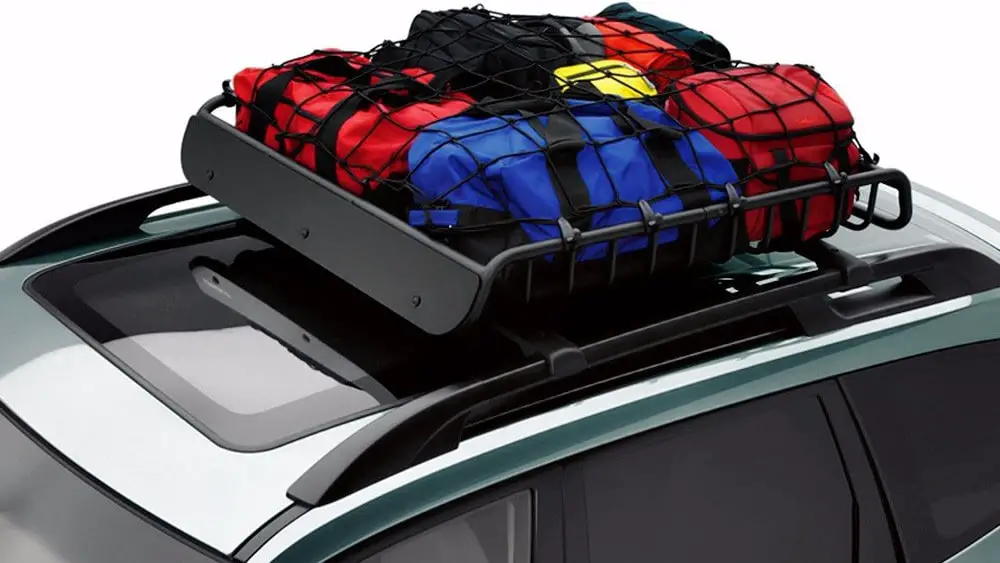
Roof Rails vs. Roof Racks: Which is Better for Different Vehicles?
The choice between roof rails and roof racks depends on various factors, including the type of vehicle you own. Here are some considerations for different vehicle types:
- Sedans and Hatchbacks: Sedans and hatchbacks often have limited roof space and may not have pre-installed roof rails. In such cases, roof racks provide a versatile option for carrying cargo.
- SUVs and Crossovers: Many SUVs and crossovers come equipped with roof rails as a standard feature. If you need to carry specific accessories or gear, roof racks can complement the existing roof rails for added versatility.
- Trucks and Vans: Trucks and vans may benefit from both roof rails and roof racks, depending on the intended use. Roof rails provide a solid base for accessories, while roof racks offer a customizable platform for carrying various cargo types.
- Specialty Vehicles: Specialty vehicles, such as RVs or camper vans, may have unique roof configurations. In such cases, it’s important to explore compatible roof rail or roof rack options designed specifically for thosevehicles.
Consider your vehicle’s specifications, intended use, and personal preferences when deciding between roof rails and roof racks. It’s also helpful to consult with a professional or refer to the vehicle’s manufacturer guidelines for compatibility and installation recommendations.
Roof Rails vs Roof Rack: FAQs
Q1: Are roof rails and roof racks interchangeable?
No, roof rails and roof racks are not interchangeable. Roof rails are integrated into the vehicle’s design and provide a base for attaching accessories, while roof racks are separate systems that require installation and provide a platform for carrying cargo.
Q2: Can I install roof rails or roof racks myself?
The installation process for roof rails and roof racks can vary depending on the vehicle and the specific system. While some installations may be straightforward and can be done by an experienced DIY enthusiast, it’s recommended to consult the vehicle’s owner’s manual or seek professional assistance to ensure proper installation and compatibility.
Q3: What are some popular accessories that can be used with roof rails and roof racks?
Popular accessories for roof rails and roof racks include cargo carriers, roof boxes, bike racks, kayak mounts, ski racks, and roof baskets. These accessories offer versatility and expand the cargo-carrying capabilities of your vehicle.
Q4: Are roof rails or roof racks compatible with all vehicle models?
Roof rails and roof racks are designed to be compatible with a wide range of vehicle models. However, it’s essential to check compatibility specifications and installation requirements for your specific vehicle make and model.
Q5: Can roof rails or roof racks damage my vehicle’s roof?
When installed and used correctly, roof rails and roof racks should not damage your vehicle’s roof. However, improper installation or exceeding weight limits can cause potential damage, such as scratches, dents, or stress on the roof structure. It’s important to follow the manufacturer’s guidelines and recommendations for installation and usage.
Q6: Do roof rails and roof racks affect fuel efficiency?
The addition of roof rails or roof racks can affect the aerodynamics of your vehicle and potentially decrease fuel efficiency. The extent of the impact depends on various factors, including the design of the roof rails or roof racks, the type of cargo being carried, and driving conditions. Removing roof accessories when not in use can help mitigate the impact on fuel efficiency.
Q7: Can I leave roof rails or roof racks on my vehicle all the time?
While it is possible to leave roof rails or roof racks on your vehicle permanently, it’s advisable to remove them when not in use. Removing the accessories can help reduce wind resistance, minimize the impact on fuel efficiency, and prevent potential damage from exposure to the elements or low clearance areas.
Q8: Are there any legal restrictions on using roof rails or roof racks?
Some countries or regions may have specific regulations or restrictions regarding the use of roof rails or roof racks. It’s important to familiarize yourself with local laws and regulations to ensure compliance when using these accessories.
Q9: Can I use roof rails or roof racks for carrying heavy items?
Roof rails and roof racks have weight limitations specified by the vehicle manufacturer and the roof accessory manufacturer. It’s crucial to adhere to these weight limitations to maintain vehicle stability and safety. Always refer to the product specifications and guidelines for the recommended maximum weight capacity.
Q10: Are there any maintenance requirements for roof rails and roof racks?
Both roof rails and roof racks require regular maintenance to ensure optimal performance and longevity. This includes inspecting for damage, cleaning regularly, and checking attachment security. Refer to the manufacturer’s instructions for specific maintenance recommendations.
Roof Rails vs Roof Rack: Final Thoughts
When it comes to choosing between roof rails and roof racks, there are several factors to consider, including your vehicle type, cargo requirements, ease of installation, and budget. Roof rails provide a sleek and integrated look, while roof racks offer versatility and modularity.
The installation processes for both roof rails and roof racks may vary depending on the vehicle and specific system. It’s important to follow the manufacturer’s instructions or consult a professional for proper installation.
To ensure the longevity and optimal performance of roof rails and roof racks, regular maintenance is necessary. This includes inspection, cleaning, and checking attachment security.
By considering your specific needs and following proper installation and maintenance practices, you can choose the option that best suits your requirements and enjoy the convenience of additional cargo-carrying capabilities.
